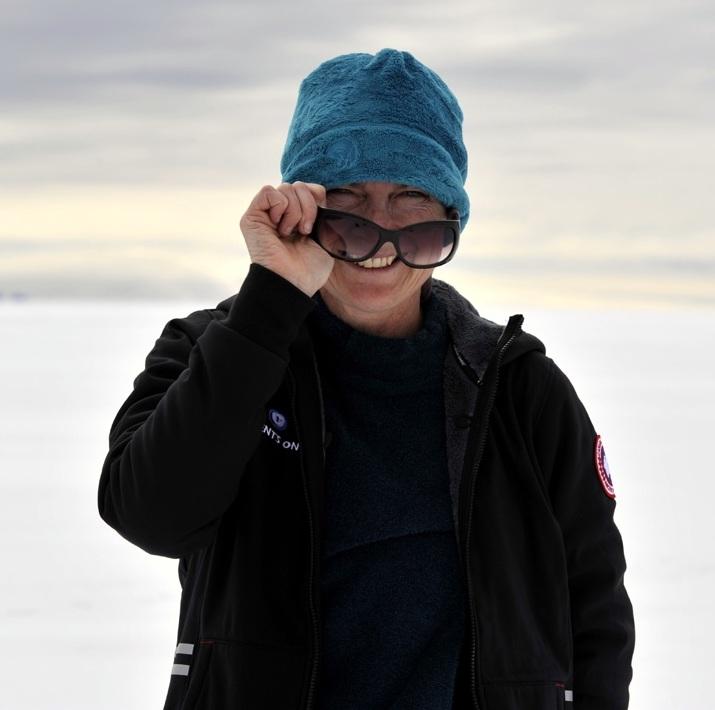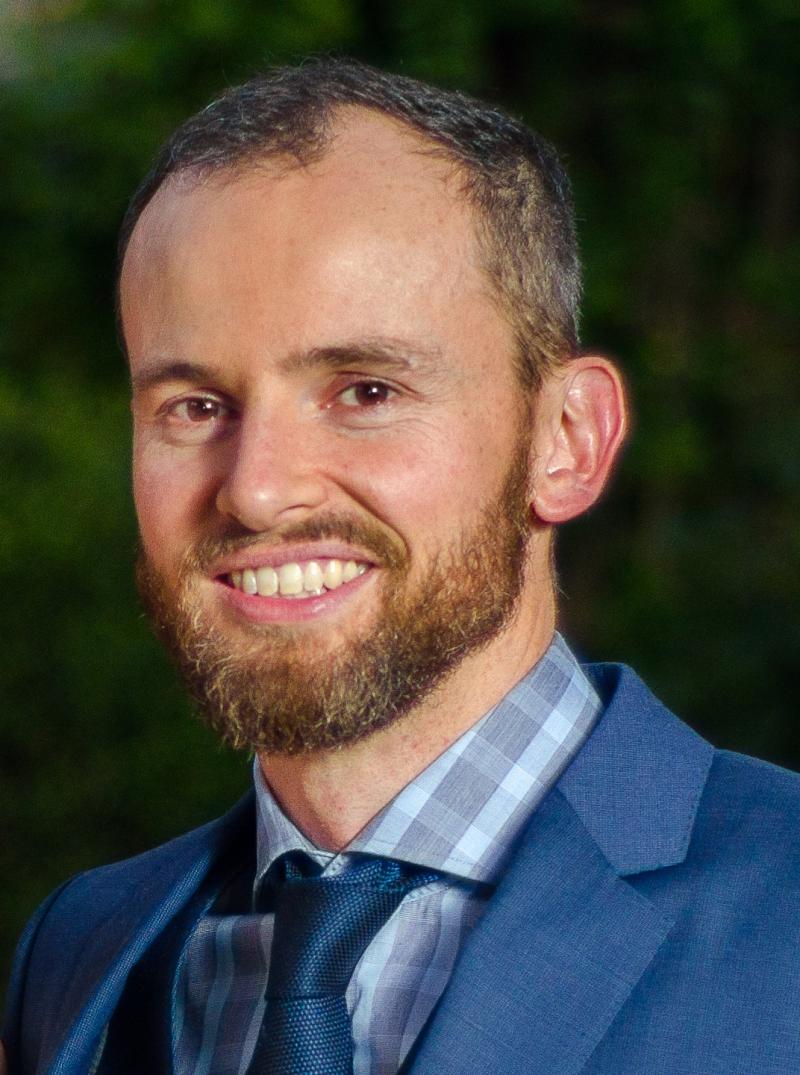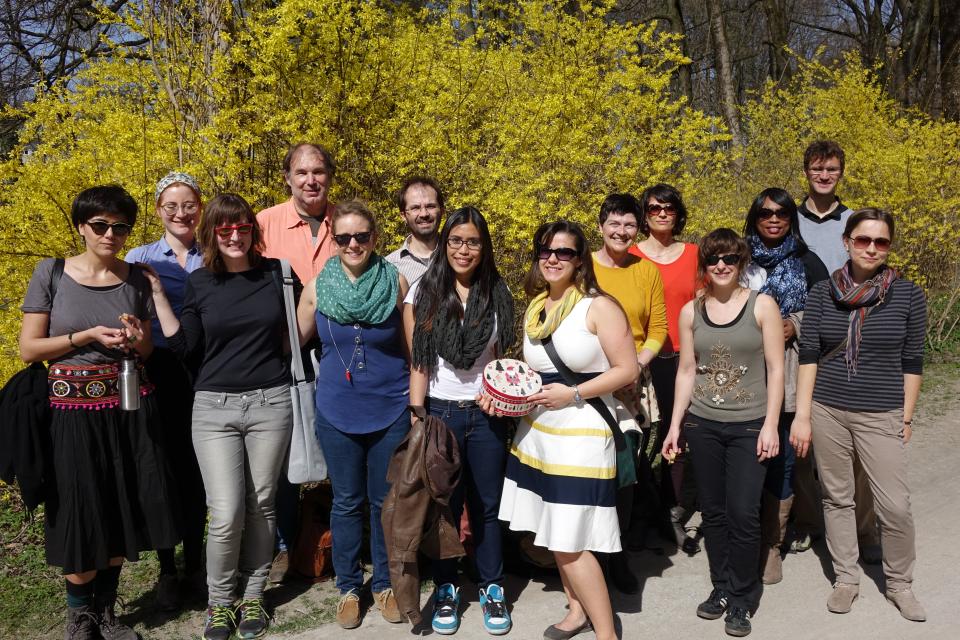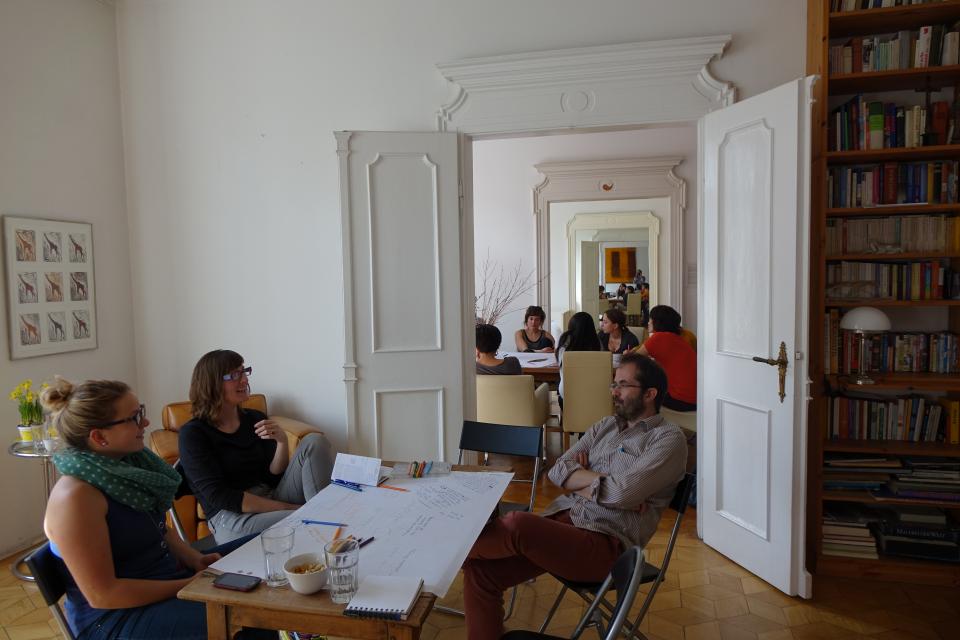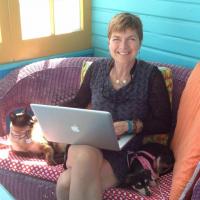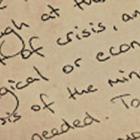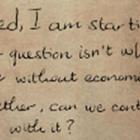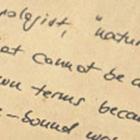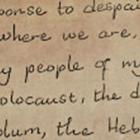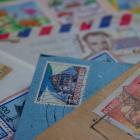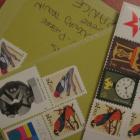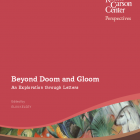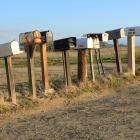About the Exhibition
We need to overcome the narrative of hopelessness as much as we need to overcome environmental devastation. The environmental crisis is also a crisis of hope.
—Elin Kelsey
This virtual exhibition invites people all over the world to post letters about hope and the environment. By sharing emotional tensions and complex feelings, contributors to this site seek to move beyond the “doom and gloom” narrative that dominates the ways we characterize life on planet Earth. Such personal stories and visions have the power to change landscapes, to “move mountains,” as Christof Mauch points out in his essay on “The Magic of Environmental History and Hopes for the Future.”
Why hope is controversial
When I consider hope right now, I can’t help thinking about the advice that the British government published in the wake of Field Marshall Douglas Haig’s 60,000 casualties in one day on the Somme: “How the civilian may help in this crisis: Be cheerful. Write encouragingly to friends at the front. Don’t think you know better than Haig.” There’s a fine line between the optimism that wills people on in times of adversity and one that eschews reality, one that becomes self-censorship, one that serves the status quo. Hope starts to seem like an emotion designed to comfort the helpless, the passive.
—Excerpt from Cameron Muir’s letter.
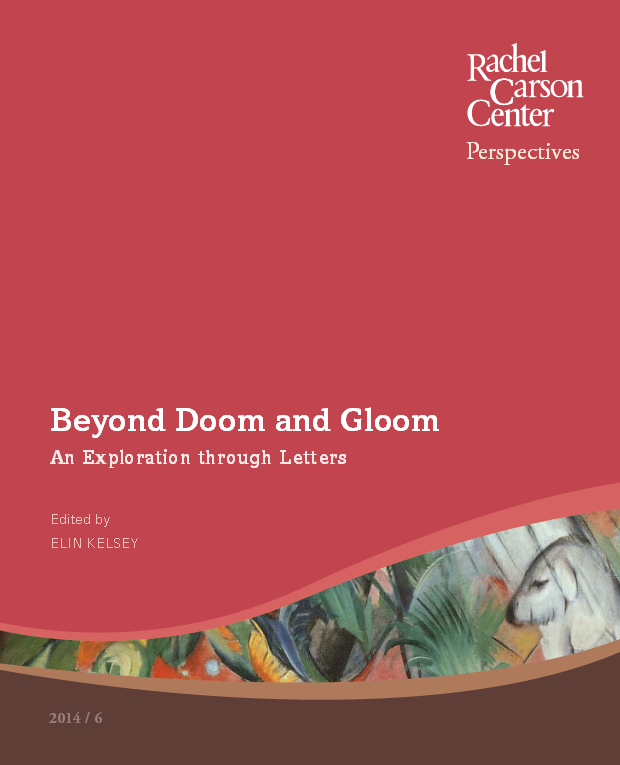
RCC Perspectives
RCC Perspectives
Cover of the RCC Perspectives issue: Kelsey, Elin (ed.), “Beyond Doom and Gloom: An Exploration through Letters,” RCC Perspectives 2014, no. 6. Design by Stefan Zinsbacher. Cover photo courtesy of Wikipedia Commons. Copyright by the Rachel Carson Center.
Click here to read more letters.
Why hope matters now
“My whole generation has spent our lives writing obituaries of nature,” says conservation biologist Nancy Knowlton, Sant Chair of Marine Science at the Smithsonian Institution. Environmental issues are real and horrific. But failure to separate the urgency of environmental issues from the fear-inducing ways we communicate them blinds us to the collateral damage of apocalyptic storytelling. For a richer exploration of these themes, please watch this video of a lunchtime colloquium Elin Kelsey delivered at the Rachel Carson Center for Environment and Society.
Conservation psychologists now speak about “environmental grief,” “eco-fatigue,” “ecosystem distress syndrome,” and “eco-despair.” By bombarding people with issues that feel hopeless at scales too large to surmount, we inadvertently cause them to downplay, tune out, or shut down. This is an important issue with respect to public engagement, as findings, including a 2014 study by the Yale Climate Change Communication Program, indicate that hope is particularly critical as a motivator in the doom-heavy world of climate change activism.
About the virtual exhibition
This virtual exhibition emerged from a workshop hosted by the Rachel Carson Center (RCC) in 2014. We gathered as a group of academics from a variety of countries and environmental humanities disciplines. Our interest in creating cultural movement in the ways we characterize the environmental drew historic inspiration from the Blue Rider artists who lived and worked in the Munich borough of Schwabing where the RCC is based. We began the day visiting the Blue Rider collection at the Lenbachhaus museum, and then adopted the spirit of “movement” by conducting a “Walking Colloquium” in which we shared ideas while exploring the streets and parks of Munich. Here are some of the questions that guided our walk:

The Blue Rider by Franz Marc, 1912
The Blue Rider by Franz Marc, 1912
This image can be found in the Wikipedia Commons.
 This work is licensed under a Creative Commons Public Domain Mark 1.0 License.
This work is licensed under a Creative Commons Public Domain Mark 1.0 License.
- How can we best influence and enact a shift beyond “doom and gloom”?
- How do we overcome the pervasive belief that if we speak of hope, we must not know how bad things are?
- How do we address the fear that if we acknowledge the capacity for resilience, we risk fueling complacency, or feeding the rhetoric of environmental skeptics?
- How might we “hack” our rational response to shifting environmental narratives in order to embrace more holistic, integral, emotive, perceptive, creative ways forward?
- How do we bring the Digital Age, new stages and structures of collective consciousness, the capacity for agency in the other-than-human world, and other emerging trends into the ways in which we imagine and invent new environmental narratives?
We hope you’ll feel moved to add your own voice to the conversation.
The Rise of #OceanOptimism: More than 50 million tweets!
In May 2014, Elin Kelsey built upon the interest in hope generated through the RCC walking colloquium by co-hosting a 48-hour workshop in London, England, with a small group of conservation biologists, young journalists, environmentalists, and designers. Together, they launched an #OceanOptimism twitter hashtag and encouraged others to share hopeful, marine conservation successes. On World Oceans Day (8 June 2014) the tweets came in thick and fast, going viral to reach over 30 million users in its first year. More than 58 million users were using the #OceanOptimism by the time this virtual exhibition opened in March 2016. See more at www.elinkelseyandcompany.com.
Acknowledgements
Elin Kelsey would like to thank all those who contributed to the virtual exhibition: Eliza Encheva, Massimo Moraglio, Rachel Shindelar, Richard Kool, Susanne Schmitt, Mark Wilson, and Richard Christian.
The author is also grateful to the team of the Environment & Society Portal: Dr. Kimberly Coulter, and Katrin Kleemann. A special thanks goes to Eliza Encheva for her ideas, conceptualization, and coordination of the exhibition. She was a driving force behind this project. Thank you also to Max Fath for the graphic design of the handwritten thumbnails and the header.
What do other scientists think?

Screenshot of the website “Is this how you feel?”
Screenshot of the website “Is this how you feel?”
Except where otherwise noted, all work on this site is licensed under a Creative Commons Attribution-NoDerivs 3.0 Unported License.
The letters contained on this page represent the views of the individual authors - any one authors opinion does not necessarily reflect that of the majority.
 This work is licensed under a Creative Commons Attribution-NoDerivs 3.0 Unported License.
This work is licensed under a Creative Commons Attribution-NoDerivs 3.0 Unported License.
“Is this how you feel?” website
“Letters to the Future” website
How to cite
Kelsey, Elin. “Beyond ‘Doom and Gloom’. Letters from the Rachel Carson Center.” Environment & Society Portal, Virtual Exhibitions 2016, no. 1. Rachel Carson Center for Environment and Society. doi.org/10.5282/rcc/6524.
ISSN 2198-7696 Environment & Society Portal, Virtual Exhibitions
 2016 Elin Kelsey
2016 Elin Kelsey
This refers only to the text and does not include any image rights.
Please click on an image to view its individual rights status.


